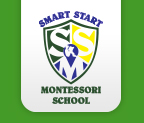 The Montessori classroom environment is carefully prepared to encourage exploration and to be as conducive as possible for learning. All parts of the classroom are scaled to the size of students and children are free to respond to their natural drive to work and learn, working spontaneously and independently with scientifically-designed Montessori materials. Each classroom is divided into well-defined work areas, where students develop practical and intellectual abilities through individual discovery and exploration of language, mathematics, culture, practical life, and sensorial development.
The Montessori classroom environment is carefully prepared to encourage exploration and to be as conducive as possible for learning. All parts of the classroom are scaled to the size of students and children are free to respond to their natural drive to work and learn, working spontaneously and independently with scientifically-designed Montessori materials. Each classroom is divided into well-defined work areas, where students develop practical and intellectual abilities through individual discovery and exploration of language, mathematics, culture, practical life, and sensorial development.
All Montessori classrooms are designed for a multi-year age mix to allow both individual and social development. Both older and younger children benefit from such enriched learning environment. Younger children benefit from the broader perspective and experience of the older children who are there to help them, while older students have the opportunity to refine skills and reinforce knowledge by assisting the younger children. Each child’s unique personality is encouraged and each child is respected as an important member of a community.
Children’s inherent love of learning is encouraged by giving them opportunities to engage in meaningful activities under the guidance of a trained adult. Because learning is a natural activity, children choose their own work. Students learn more easily and concentrate for longer periods of time when they choose what they want to learn.
Classroom materials are carefully constructed to provide children with a hands-on understanding of the subject studied. Montessori materials are self-correcting so the child cannot progress until they do the work correctly. This gives children the opportunity to learn using the powerful method of trial-and-error. All objects and materials in a Montessori classroom share similar characteristics: they are proportioned, limited, simple, washable, inviting and attractive.
